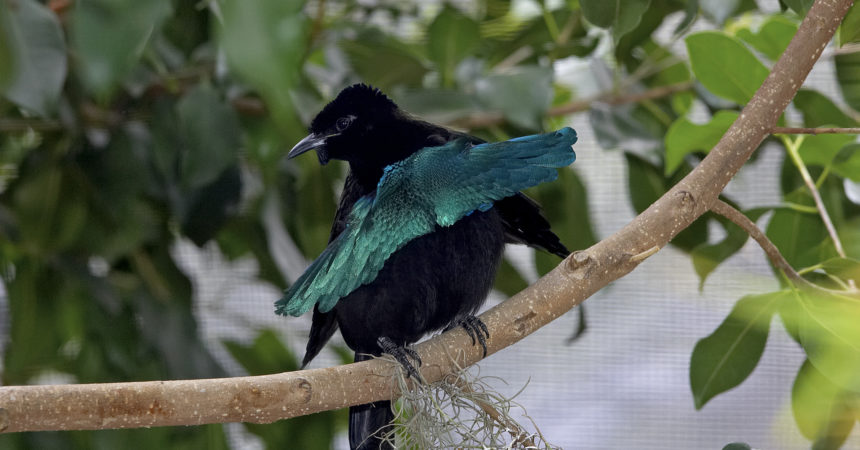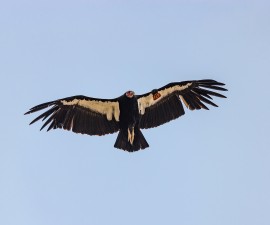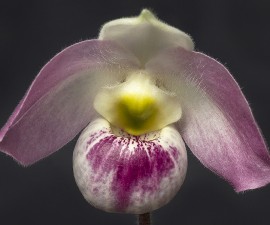The superb pird-of-paradise Lophorina superba (or SBOP for short) belongs to a unique family of birds native to Indonesia, New Guinea and parts of Australia. Here at the Zoo, a pair of SBOPs are housed at the Avian Propagation Center, in an off exhibit enclosure set up for breeding. Reproduction for this species is seasonal. The male and female are isolated for half of the year during their annual molt. At the San Diego Zoo, this process typically begins in June and is completed by the end of December.
This species is sexually dimorphic—meaning the male and female differ in appearance. The male is solid black, with long black cape feathers. His black feathers serve as a beautiful background to highlight iridescent blue feathers, which form a shield-shaped pattern on his chest. The male displays these shield feathers, along with a few additional iridescent feathers, on the top of the head during courtship dances performed for females. The female is less striking in appearance than the male, with feathers in various shades of light brown. Appearance of young males is similar to females until they develop breeding plumage at five to six years of age.

Following the completion of molt, we introduce breeding pairs, with male and female housed in adjacent enclosures, so that they may see one another for the other half of the year. We open the door separating the two enclosures is each day to allow the pair access to a shared space. The breeding season typically starts in January, when the male has completely finished molting and begins vocalizing more frequently. As the breeding season progresses, he becomes increasingly interested in the female, eventually leading to courtship displays where he will shift his shape for her, using his jet black cape feathers and vibrant, iridescent blue feathers.
We recently installed a video camera in the shared breeding space and captured the male’s amazing display. As the video starts, the female is in the foliage at the right. Later in the video, she hops on top of the video camera!
In courting the female, the male stands on a horizontal perch and produces a loud vocal call to draw the female’s attention. As the female draws closer and is within visual contact, he continues to vocalize, then fans his black cape feathers into an oval shape separating his head from the rest of his body. In addition to displaying the cape feathers, he may produce a clicking noise, as he jumps up and down and bounces from side to side. While the male displays, the female watches very closely, inspecting each movement. This courtship dance may be performed many times for the female, as he persistently makes his play to win her over.
Kelly Bass is a senior keeper at the San Diego Zoo.





